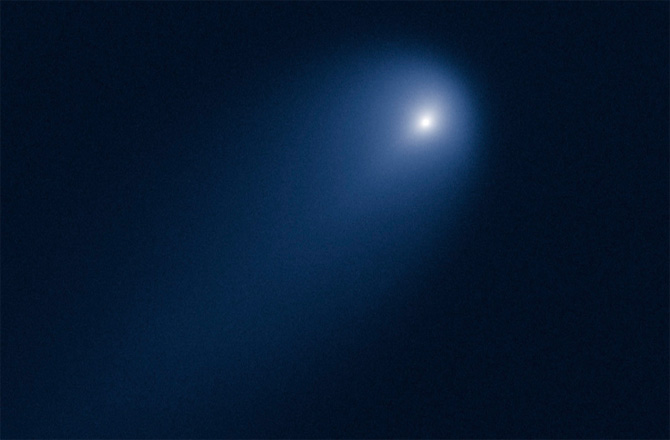
Computer simulations predicting the location and movement of the comet's dust trail show Earth will be passing through the fine-grained stream around Jan. 12, 2014.
Some of the particles, which are smaller in diameter than a red blood cell, should be pushed back by the pressure of sunlight, allowing them to be captured by Earth's gravity when the planet plows through the largely invisible stream.
"As the comet passes Earth's orbit going into the sun, you'll have particles trailing behind it. But since it's passing so close to the sun, you're also going to have particles pushed away by the pressure of the sunlight. That means we'll have particles coming outward and also falling inward. We don't often deal with particles that come both directions," said Bill Cooke, lead scientist at NASA's Meteoroid Environment Office at the Marshall Space Flight Center in Huntsville, Ala.
The particles are so small that even though they will hit the atmosphere at about 125,000 mph, instead of burning up, triggering so-called "shooting stars," they will be stopped entirely, predicts astronomer Paul Wiegert, with the University of Western Ontario in Canada.
The only visible and detectable sign of the comet dust might be a proliferation of bright blue clouds at the edge of space. Scientists suspect these so-called noctilucent, or "night-shining" clouds are being seeded by dust in the upper atmosphere.
Eventually, the trapped comet dust will make its way -- silently and invisibly -- to the planet's surface.
Comet ISON, which was discovered in September 2012 by amateur astronomers in Russia, is believed to be making its first swing into the inner solar system, so unlike repeat fliers, it hasn't laid down a rich dust trail from previous orbits for Earth to fly through.
ISON is an acronym for the telescope the astronomers were using, the International Scientific Optical Network.
If the comet survives -- and that's a big if -- the comet will about 700,000 miles above the surface of the sun when it makes its closest approach on Nov. 28. The closest it will come to Earth will be about 40 million miles on Dec. 26.
A comet in the 1970s passed 10 times farther away from the sun than ISON's orbit and partially disintegrated, noted Cooke.
"ISON may very well not survive. I guess we won't know for sure until we look for it to come out from behind the sun," Cooke told Discovery News.
Currently the comet is about 280 million miles away from Earth and approaching the outer part of the asteroid belt.



Reader Comments
to our Newsletter